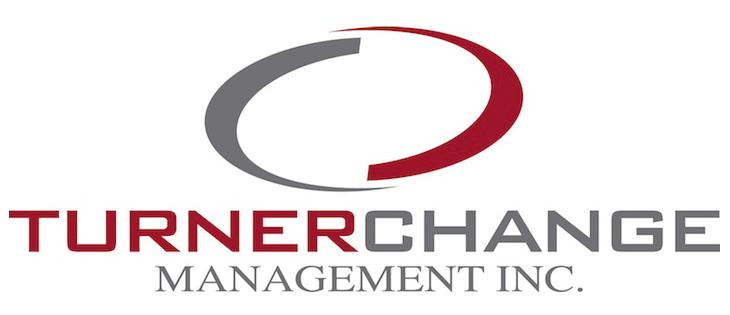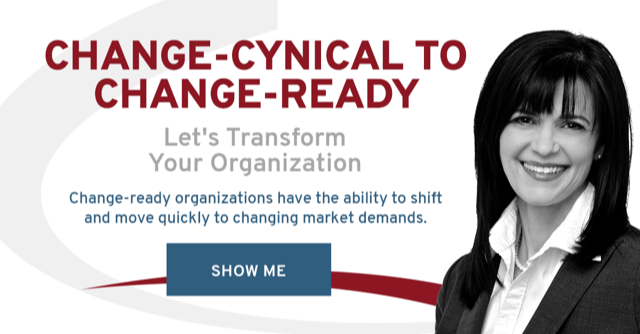Help! Our Change Champion Has Stopped Championing
What does a change management team do when the “champions” of the change stop championing?
A participant at a workshop asked me this question. The change management team was frustrated because the leaders who launched the change initiative had stopped championing it. Yet, they were still expected to implement the change.
I have been asked this or a similar question many times. The message I receive is always the same—the change management or project team feels abandoned by the change sponsor. Once this feeling emerges the team starts to question how they can successfully implement the change, or even why they should continue when it appears the change sponsor is not supporting the change.
When this happens both the specific change initiative, and your organization’s success with future changes is at risk.
The change champion or sponsor is the person or group of people that initiate a change for an organization. In most situations, but not always, the change sponsor is one or more executive, senior, or key leader within the organization. For me this is always a reminder of the necessity of committed executive change leaders throughout the transition.
What can you do, as a member or leader of the change management team, when you find yourself in this situation?
The first thing to do when you believe your leaders are no longer championing the change is to accurately assess the situation. The worst thing to do is to make assumptions. A conversation with the change sponsor is the best way to understand what’s happened and why. There can be many reasons a leader stops championing a change.
If you are the executive leader responsible for the change, you need to be receptive to the conversation. Better yet, initiate the conversation so your team understands what is happening.
There is no substitute for skilled committed leadership during change.[1]
Here are three actions that can help build and maintain the leadership needed throughout both the Event and Whitespace dimension of the change:
1. Ensure leaders’ understand the role, expectations, and responsibilities of change leadership
Launching of a change initiative is usually the responsibility of senior leaders within the organization. Like other operational issues, once the decision to launch a change has been made, the task of implementing it is delegated. Therefore, it’s not surprising that once the change management or project team has been formed, and the tasks assigned, the executive leader believes her role is complete.
In reality, her role becomes more critical once the change has been announced, and a change management team assigned. A skilled change management team is helpful, but not sufficient to enable successful and sustainable change.
You need executive leaders who are skilled change leaders. Skilled change sponsors advocate, model, and support the change-recipients in navigating their Whitespace. They are active in creating the environment the organization needs to make the change possible. The skilled executive change leader also communicates with the affected leaders, managers, and employees to assess their movement and ability to navigate the Whitespace.
2. Monitor the change-recipients progress through the transition and communicate their progress to the change sponsor
John Kotter[2] noted one mistake organizations make is declaring victory too soon. It is essential your change sponsors understand the way people move through a change. In my new book “Launch Lead Live: The Executive’s Guide to Preventing Resistance and Succeeding with Organizational Change” I talk about the risks when leaders fail to account for this in their planning.
Change sponsors begin their transition before anyone else. By the time the change is rolling out to the rest of the organization the executive leaders (change sponsors) are well into their own transition.[3] Leaders who are not aware of this lag time can get lulled into a false belief a change is done; when for most of the people affected it is just getting started.
I experienced this personally, as an employee. At a management meeting, the senior leader (change sponsor) congratulated everyone on the completion of a recent change. He was already talking about the next change initiative. We were surprised and concerned because we could tell his focus had shifted. And at our level of the organization, we were just getting started with our first planning session.
In addition to ensuring leaders are aware of the lag time, establishing a transition monitoring system also helps. Early in the initiation phase identify the transition outcome indicators (tangible and intangible). These indicators enable you to assess, track and communicate people’s progress through the change process. Transition outcome indicators, once defined, act like a dashboard for the change initiative.[4]
3. Actively communicate shifts in the internal or external environment that impact on your change initiative
Sometimes a change initiative can lose change sponsorship because external or internal conditions shift. As a result the perceived need, urgency or scope of an ongoing organizational change initiative also shifts. For example with the recent downturn in the oil industry companies have put projects on hold, and abandoned planned expansions. Similarly, shifts in your internal environment can also affect the change sponsors ability or willingness to champion a change.
The first thing to do when an unexpected internal or external event occurs is to assess its impact on your organization’s change initiatives.
- Will the event require you to cancel or delay a planned change?
- Will the event require a new unplanned change?
- What impact will the event have on existing changes?
- Will an ongoing change initiative need to be stopped or slowed down?
- Where are the change-recipients along the Continuum of Change?
Once you know the impact, the next step is to decide a course of action. That sounds obvious, but it’s not. I hear from many employees and managers about changes that start, and then just seemed to wither away. No one is really sure what happened. People just talk about software that didn’t get fully implemented, business processes that were not adopted and subsequently abandoned, or structural changes that never quite finished.
Allowing a change to simply languish is more destructive than deliberating stopping it, or consciously altering its course. By not taking action, your organization gains a reputation for not following through on the changes it initiates, and employees learn to hold back. They become reluctant to engage with new change initiatives. Your organization’s ability to handle future changes is reduced.
When an internal or external event has impacted a change initiative, it is critical the people affected understand the impact of the event on current and new change initiatives.
Strong committed leadership is an essential element for successful and sustainable organizational change
The ability to launch and lead change is an essential leadership competency. Successfully navigating the complexities of change requires leaders who understand their role in enabling its adoption.
What are you doing to prepare your leaders for the role of change leader?
———————————————————————————————————————————————————-
[1] Turner, D. M. (2015). Launch Lead Live: The executive’s guide to preventing resistance and succeeding with organizational change. Saskatchewan: YNYP.
[2] Kotter, J. P. (1996). Leading Change: Why Transformation Efforts Fail. Harvard Business Review, 85(1), 96-103.
[3] Turner, D. M. (2015). Launch Lead Live: The executive’s guide to preventing resistance and succeeding with organizational change. Saskatchewan: YNYP.
[4] IBID






Leave a Reply
Want to join the discussion?Feel free to contribute!